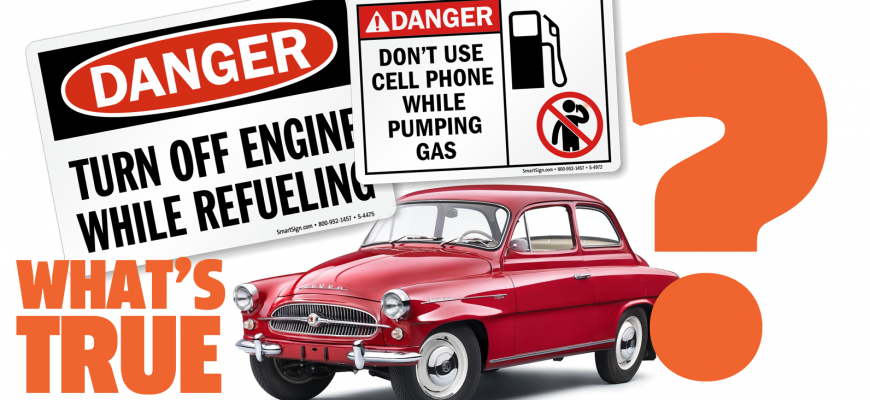Pumping gas with your engine running is generally discouraged and, in some places, illegal. While the risk of a major incident might seem low, the potential consequences are severe.
Risks Involved
- Static Electricity: The act of pumping gas can create static electricity. A spark near fuel vapors is extremely dangerous.
- Fuel Vapor Ignition: Even a small spark can ignite fuel vapors, leading to a fire or explosion.
- Mechanical Issues: A running engine has more potential for mechanical failure, which could lead to a spark.
Potential Fines and Legal Ramifications
Many jurisdictions have laws prohibiting refueling with the engine running. Fines can vary widely depending on location, but it’s better to be safe than sorry.
Common Sense and Best Practices
The simplest and safest approach is to:
- Turn off your engine.
- Avoid using your cell phone while pumping gas.
- Discharge static electricity by touching a metal part of your car before touching the fuel nozzle.
Following these simple steps significantly reduces the risk of an accident and helps you avoid potential fines. Prioritizing safety at the pump is always the best course of action.
Myths Debunked
There are some common misconceptions about pumping gas with the engine on:
- Myth: It saves gas by not restarting the engine.
Reality: The amount of gas saved is negligible compared to the potential risks. Idling an engine for a few minutes consumes very little fuel.
- Myth: It’s only dangerous in hot weather.
Reality: While hot weather can increase vapor pressure and potentially raise the risk, the danger exists regardless of the temperature.
- Myth: It’s okay if I’m just running in for a quick snack.
Reality: Even a brief moment with the engine running creates a potential hazard.
Modern Vehicles and Safety Features
While modern vehicles have numerous safety features, these features are not designed to completely eliminate the risks associated with refueling with the engine running. Safety systems are meant to mitigate damage, not prevent all potential ignition sources.
Alternatives to Consider
If you’re concerned about comfort or battery drain while refueling, consider these alternatives instead of leaving the engine running:
- Roll down your windows: If it’s hot, open the windows to allow ventilation.
- Use a portable fan: A small, battery-powered fan can provide a bit of airflow.
- Consider the time of day: Refuel during cooler parts of the day if possible.
While the chances of something catastrophic happening while refueling with the engine running might be slim, the potential consequences are simply not worth the risk. The combination of fuel vapors, static electricity, and a running engine is a recipe for disaster. By adhering to common-sense safety practices and following local laws, you can protect yourself, your vehicle, and others at the gas station.
Remember: Turn off your engine, stay off your phone, and ground yourself before refueling. It’s a small inconvenience that can prevent a major accident.










Excellent reminder of basic safety! It’s easy to get complacent, but the risks are real. Thanks for the clear explanation.
Very informative! I didn’t realize some places had laws against it. Definitely worth turning the engine off to avoid fines and stay safe.
Great article! The emphasis on static electricity is important. I’ll be sure to touch my car before fueling up from now on.
Good points about the myths! I always wondered about the ‘saving gas’ argument. Glad to see it debunked with facts.
Concise and to the point. The breakdown of risks and best practices is very helpful. A must-read for all drivers.